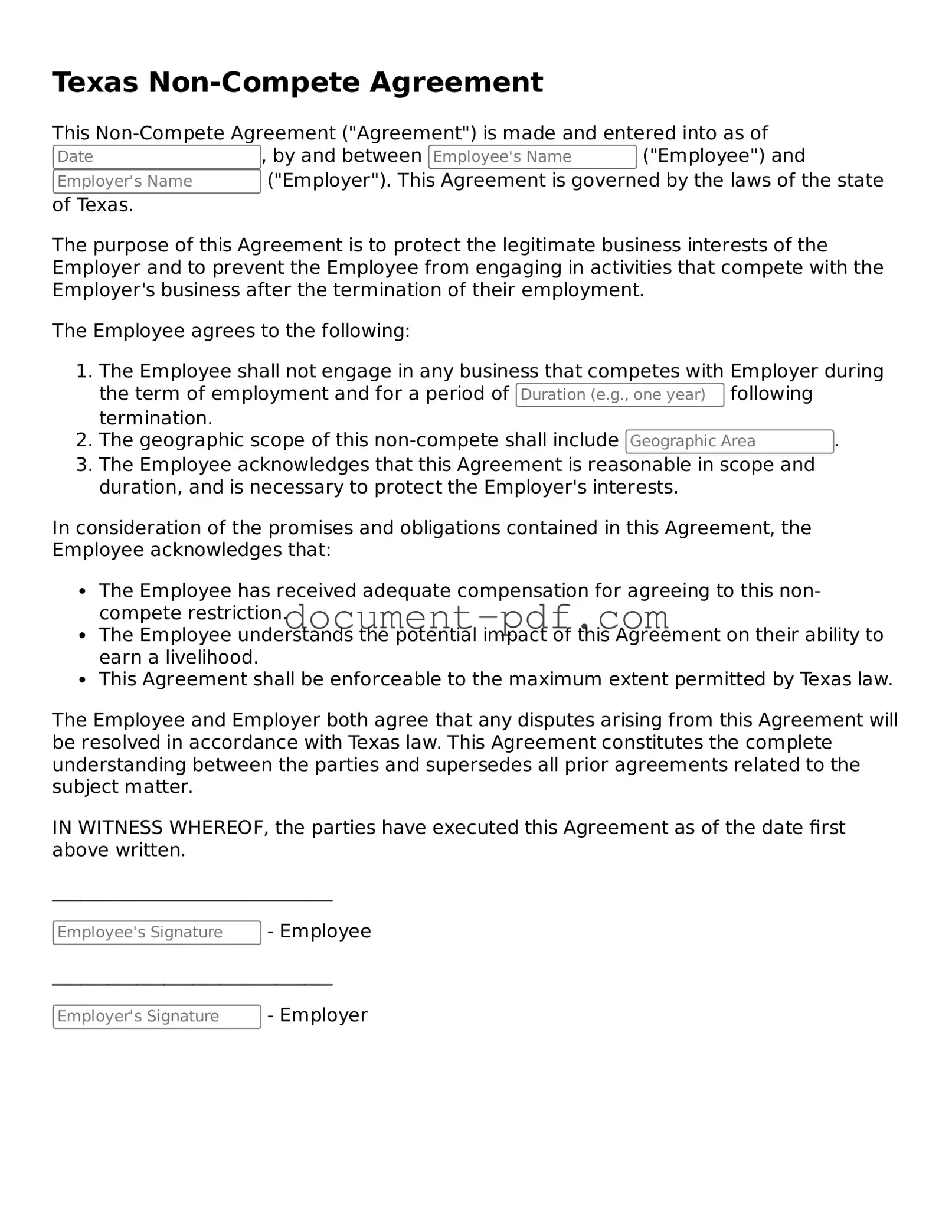Attorney-Verified Texas Non-compete Agreement Template
A Texas Non-compete Agreement is a legal document designed to restrict an employee's ability to work for competing businesses after leaving their current employer. This agreement aims to protect the employer's business interests and confidential information. Understanding the nuances of this form is essential for both employers and employees, so consider filling out the agreement by clicking the button below.
Access Non-compete Agreement Editor Here
